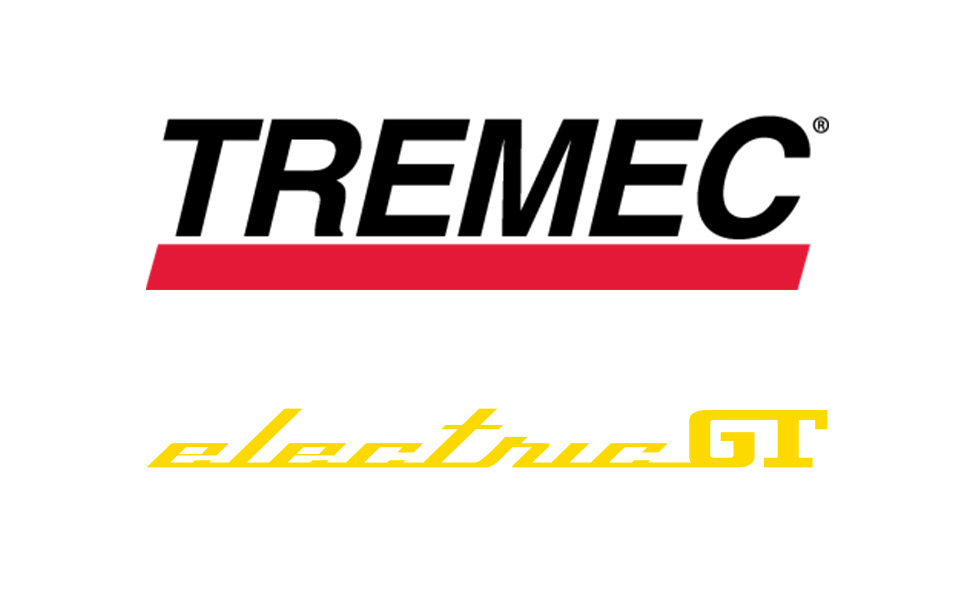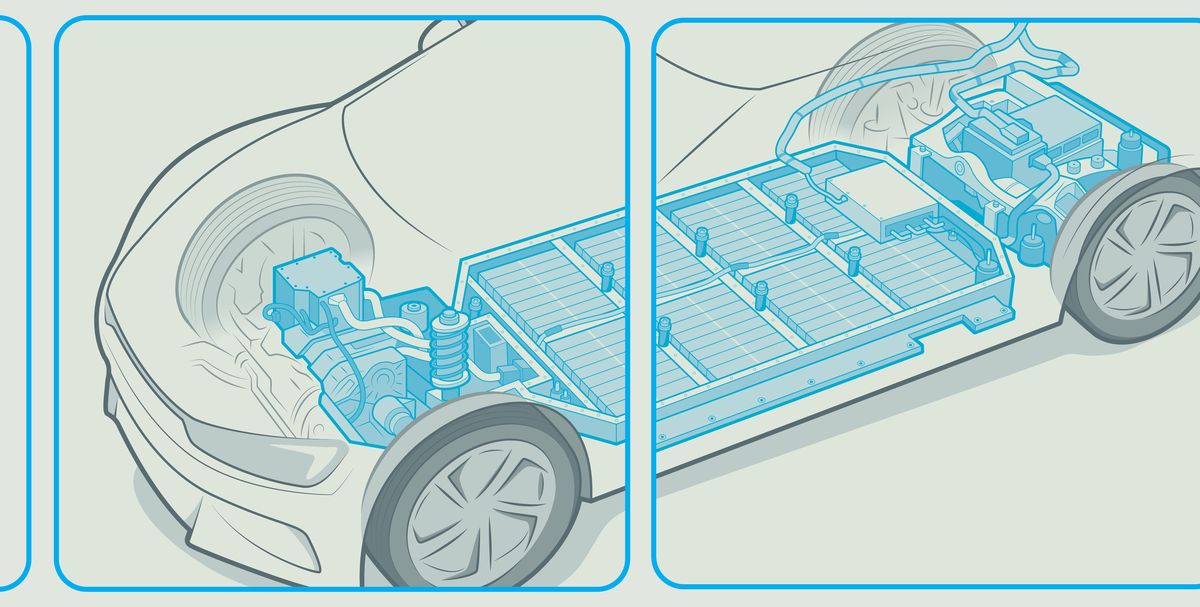
What Does Electric Horsepower Cost?
Road & Track / December 15, 2023 / Chris Perkins
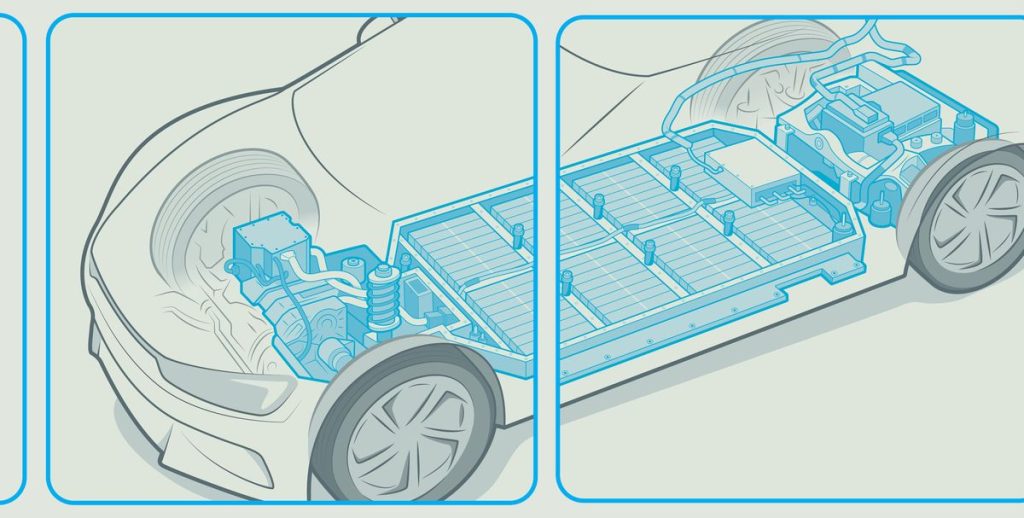
The Kia EV6 GT feels like a moment. It is, of course, Road & Track‘s 2024 Under-$100,000 Performance EV of the Year, but it’s also just a 576-hp Kia. That’s a huge number for a car from the Korean brand, even if it’s a brand that has come a long way in recent years. That’s remarkable enough on its own, especially when you consider the EV6 GT stickers for $62,695. That’s not even $4000 more than the next model down the range, the 320-hp EV6 GT-Line AWD.
It begs an interesting question: What does electric horsepower cost? It’s one that doesn’t have a straightforward answer. For starters, I don’t think it’s possible to come up with some sort of dollar-per-electric-horsepower figure you could standardize across an automaker, let alone the entire industry. It’s also a question concerning far more than just motors.
But motors are a good place to start. It’s hard not to draw a comparison with the familiar world of the internal-combustion engine (ICE). Typically when an automaker wants more power from an ICE, they can make programming changes to get a bit more oomph. Failing that, automakers can add more cylinders and/or forced induction. For the former, we know such a change adds complexity and more componentry. Go from an inline-four to an inline-six and you’ll need eight more valves, longer camshafts, a longer crankshaft, a new block and heads, two more pistons, two more rods, plus some different cooling components. Even in upping the boost on a turbocharged engine, you likely have to update some componentry, or use the same componentry across low- and high-horsepower variants, but ensure that they’re strong enough for the more-powerful one.
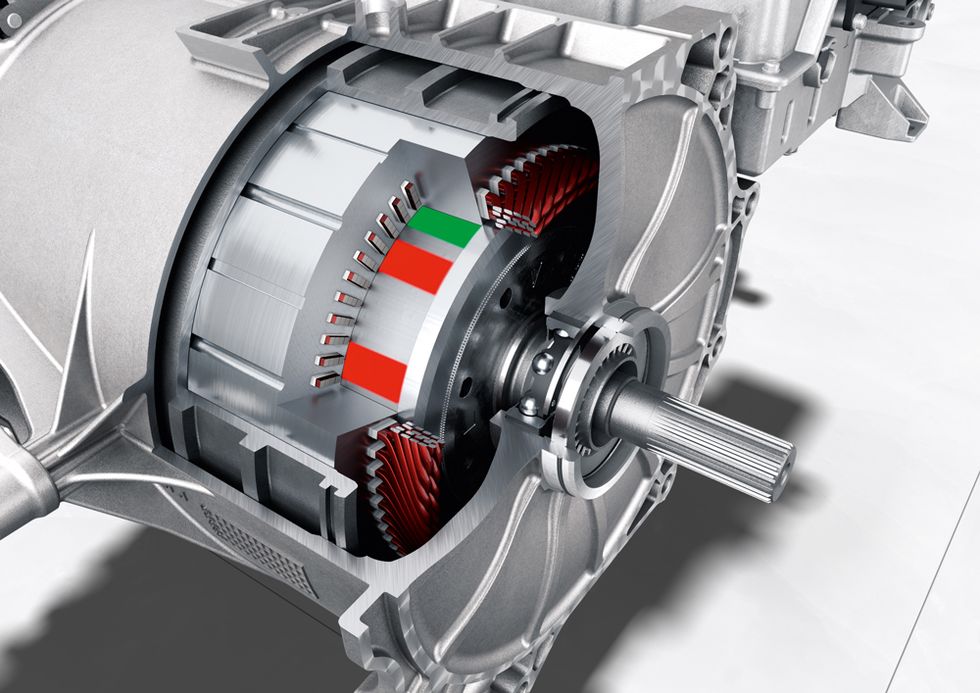
So, getting more power out of an ICE is complicated because they are, well, complicated. Electric motors, by contrast, are much simpler. There are a lot of different ways to make an electric motor, but the basic componentry is straightforward. You’ve got a rotor, stator, and a lot of copper wiring. In a lot of cases, you also have a permanent magnet, but that’s basically it.
“Within a [motor] architecture you can get more power without a lot of incremental cost,” explains Matt Memmer, Director, Engineering and Program Management at TREMEC. “I think at some point you hit that point where you have a base cost to get a motor, inverter, a reduction gearbox, and then, adding power to that isn’t a huge step, where it can be on an internal combustion engine.”
That said, the components in an electric motor aren’t cheap. It takes a lot of copper, and in permanent-magnet motors, the inclusion of rare earth magnets that are extremely expensive to manufacture and subject to wild price fluctuations. Any automotive electric-traction motor is likely an expensive thing to build, and building one that has the capability for high horsepower is even costlier.
TREMEC is best known for its high-performance transmissions, but it’s now getting into the business of building electric motors for performance vehicles. The idea is to build drive units with a higher power density that fit in the space of a preexisting vehicle’s architecture. One of its concepts is a twin-motor unit for the Ford Mustang Mach E that doubles the horsepower while occupying the same space as the standard car’s single rear motor.
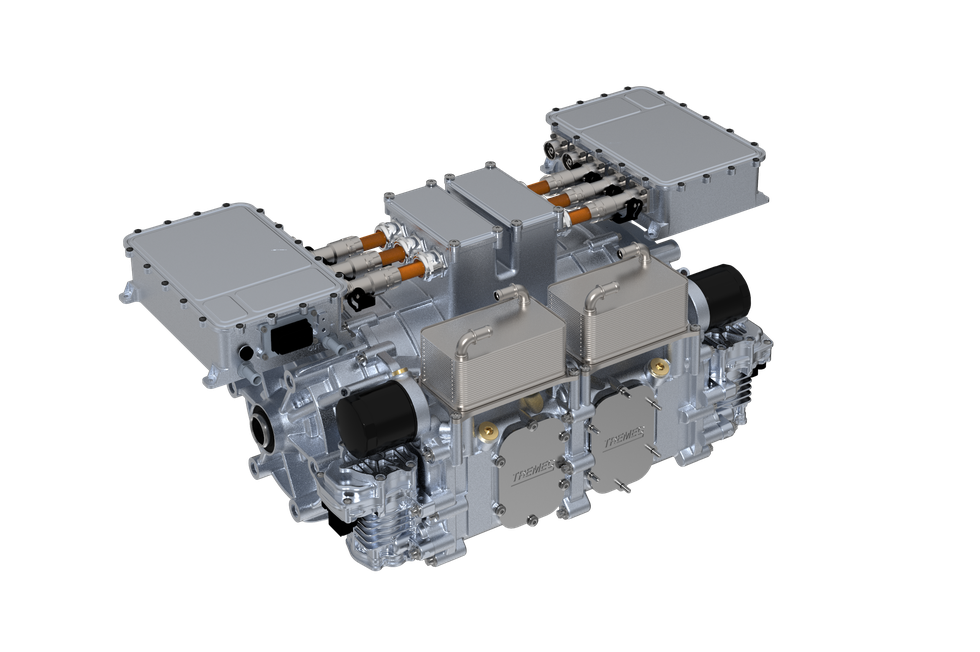
“The way we’re looking at it is trying to develop that high-performance variance that can fit into an existing vehicle and minimize the rest of the on cost,” Memmer says. “So then you do have a cost up [front] for a motor that’s more power dense, which means it’s probably a different design, it’s denser copper windings, it’s a different magnet layout. So you are going to add some cost. But again, it’s probably not equivalent to taking base Mustang and making the bump up to the GT500.”
But that motor is expensive. “There’s still some Occam’s Razor at play,” says Mike Austin, a senior analyst at Guidehouse Insights. “Making things small is expensive and the things that get you more performance are usually either more labor intensive, or use more expensive stuff.”
There are automakers that use software to limit the power of the motors, offering more to customers willing to pay an upcharge. But, in this instance, you’re only making the more-powerful, and thus, more-expensive motor across the range. Some automakers are also able to share components across multiple electric motor variants. In an extensive video explaining its in-house-designed motors, Lucid says that all its traction motors share a stator, so that surely realizes some cost savings. But in the California startup’s case, that still means making a stator good enough for a 600-plus-hp drive unit.
And that’s just covering the motor itself. If an electric vehicle maker decides to up power by using a larger motor, the cooling requirements will increase, adding more cost to the product. Same as with an internal-combustion car. More power also probably means bigger brakes, larger, stickier tires, and perhaps even aerodynamic tweaks that all cost money and wreak havoc on EV efficiency too.
Then there’s the voltage of the system. Most EVs use a 400-volt architecture, while all of Hyundai’s E-GMP platform cars (like the EV6), the Porsche Taycan, and Tesla Cybertruck use an 800-volt system. The Lucid Air uses a 900-volt system. Ohm’s law tells us that upping the voltage lowers the current, and as we’ve previously explained, lowering current reduces the size of the wiring in the vehicle, and reduces heat buildup, which itself enables faster charging times.
The better thermal properties of an 800- or 900-volt system allows automakers to get more power out of a smaller, and perhaps less costly, motor. Calvin Kim, a Porsche spokesperson and expert on the Taycan’s 800-volt system gives a helpful hypothetical to explain its benefits.
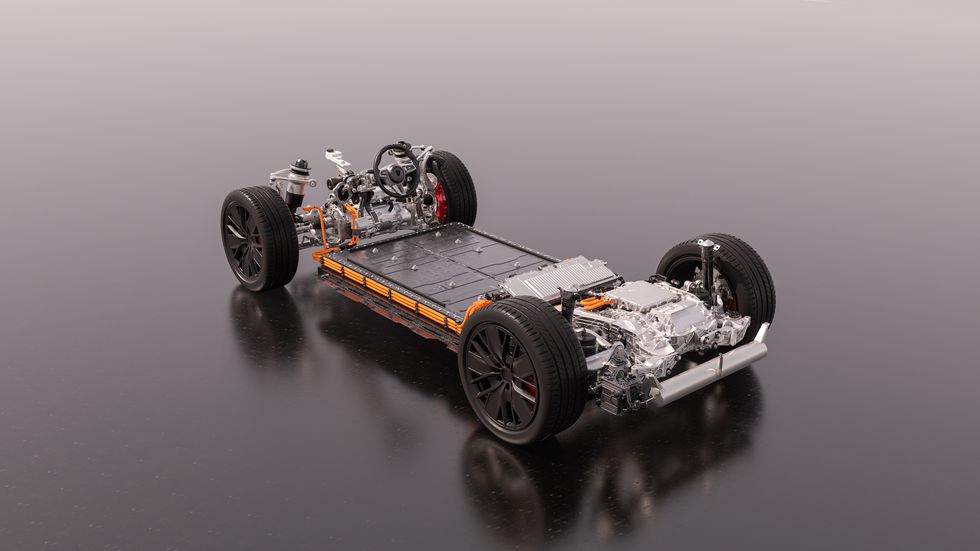
Imagine you’re building a very simple electric car, one with an 8-volt architecture and a 32-watt output. The motor has to handle 4 amps of current. If you were to lower the voltage to 4 volts, the motor must handle double the current, 8 amps. This means the motor will get hotter, and must be bulked up in response. Now imagine you want to up the power to 40 watts. On the 8-volt car, that ups current from 4 to 5 amps; on the 4-volt car current goes up from 8 to 10 amps.
Put another way—and multiplied by 10—an 800-volt architecture gives automakers a lot of headroom to add horsepower. Kim tells Road & Track that Porsche going for 800-volts in the Taycan was done to ensure that the automaker could get at least 10 years out of that architecture.
Of course, developing an 800-volt (or greater) architecture represents a huge cost at the outset, and that’s why few automakers have done it yet. But tying back into the car that inspired this piece, that 800-volt architecture allowed Kia to more easily and affordably offer a huge power bump on the EV6 than another automaker could with a 400-volt EV. But it required that huge upfront cost.
There’s a lot of factors at play here, but perhaps the most important is, as Memmer points out “every OEM prices everything completely differently and pricing doesn’t actually reflect the cost.”
Ultimately, the question of “what does electric horsepower cost” just leads to more questions. It also proves something that should already be quite evident: EVs are not nearly as simple as they seem.


